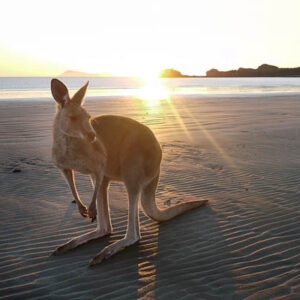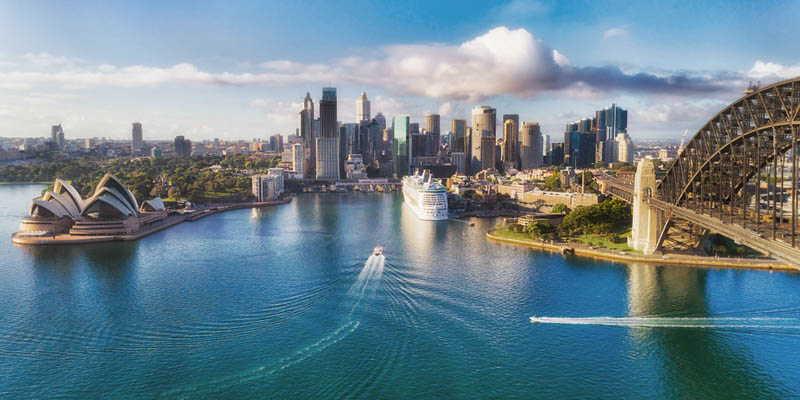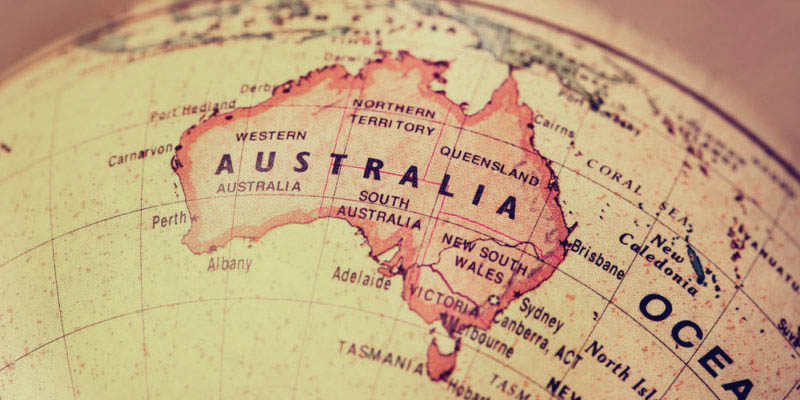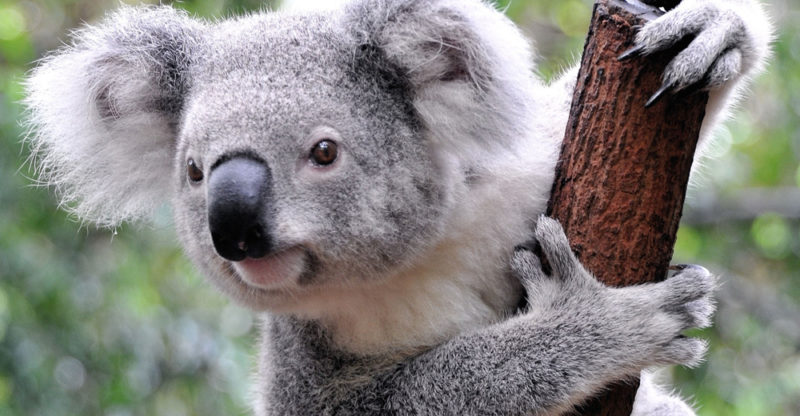Table of Contents
CHARACTERISTICS OF OCEANIA
Biography
- The predominant climate is hot and dry.
- Flora and fauna are highly diverse due to the tropical, subtropical, marine, tundra, and high-altitude ecosystems that favor their development.
- The main endemic animal species are koalas, kangaroos, Tasmanian devils, platypuses, and brushtail possums.
- Most of the territory is covered by Australia, the continent's largest country. The rest of Oceania is made uo of thousands of small islands.
- The most widely spoken language is English, with Tok Pisin, Hindi, and French being minority languages.

- Continent:
Oceania
- Area:
3,359,000 sq mi (8,700,000 km²)
- Population:
42,000,000 people.
- Number of countries:
14 independent countries and 15 colonies.
We explore Oceania, and describe its physical and cultural characteristics. In addition, we discuss the economy, religion and history of this continent.

What is Oceania?
Oceania is one of Earth's six continents and the smallest in size. It lies south of the Pacific Ocean, west of the Indian Ocean, and southeast of Asia. With an area of about 3.36 million square miles (8.7 million km2), it accounts for 5.9% of the total surface area of the planet.
One notable feature of Oceania is that 88% of its surface area is covered by a single country, Australia. The remaining 13 countries that make up the continent and the 15 colonies are distributed on the remaining 12% of the surface area of the continent. Some of these countries are extensive, like New Zealand or Papua New Guinea, while others are very small, like Nauru or Vanuatu, barely reaching an extent of 7.7 square miles (20 km2).
How did Oceania get its name? The name Oceania comes from the Greek word okeanos, meaning "ocean", which originated in the 19th century. It was thus named for being a continent composed of thousands of islands scattered across the Pacific Ocean. The name reflects the ocean's importance for the continent in terms of geographical location, culture, and economy.
CHARACTERISTICS OF OCEANIA
- The predominant climate is hot and dry.
- Flora and fauna are highly diverse due to the tropical, subtropical, marine, tundra, and high-altitude ecosystems that favor their development.
- The main endemic animal species are koalas, kangaroos, Tasmanian devils, platypuses, and brushtail possums.
- Most of the territory is covered by Australia, the continent's largest country. The rest of Oceania is made uo of thousands of small islands.
- The most widely spoken language is English, with Tok Pisin, Hindi, and French being minority languages.
- See also: Continents
Area, population and countries of Oceania

Most of Oceania's surface area is located in the Pacific Ocean, relatively isolated from the other continents. Only Australia, some islands of Southeast Asia, and Antarctica are within a distance of 5,000 miles (8,000 km) from Wellington, the capital of New Zealand.
Oceania has a total area of 3.36 million square miles (8.7 million km2), of which Australia accounts for nearly 3 million square miles (7.7 million km2). It is the continent's largest country and the world’s sixth-largest.
In addition to Australia, Papua New Guinea, New Zealand, and Tasmania (part of Australia), which are the main islands on the continent, the rest of Oceania consists of thousands of smaller islands. These are extremely small countries and colonies isolated from each other and the rest of the world.
Oceania is composed of 14 independent countries and over 15 colonies that are dependent territories of the United States, Great Britain, France, Chile, Australia, and New Zealand.
The total population of the continent amounts to 42 million, accounting for only 0.5% of the world’s total. The majority of the population (92.1%) is concentrated in Australia, New Zealand, and Papua New Guinea, with a strong presence of immigrants and descendants of European settlers.
The rest of the population is distributed on the island countries of Micronesia, Melanesia, and Polynesia, where native ethnic groups are prevalent.
The most populous country in Oceania is Australia, with over 25 million inhabitants. Due to its vast size and relatively small population, it is one of the world’s least densely populated countries, with only 8.2 inhabitants per square mile (3.2 inhabitants per square kilometer).
The second most populous country is Papua New Guinea, with nearly 9 million inhabitants, and the third is New Zealand with just over 5 million. Among the dependent territories, the most populous colony is French Polynesia with 285,000 people.
Physical geography and climate of Oceania

Most of Oceania has a hot and dry climate. This climate spreads across Australia, which covers more than 85% of the continent’s surface. Hot and dry deserts stretch over much of the territory of this vast country, with high temperatures and rainfall not exceeding 13.8 inches (350 mm) annually.
New Zealand and the islands of Micronesia, Melanesia and Polynesia, which are located in more southern latitudes, have a more temperate and rainy climate.
The relief of Oceania can be divided into three types, depending on its features and geological origin.
- Australian plains. Most of the continent's relief is determined by the relief of Australia, which is a low-elevation plain with no presence of large mountains or mountain ranges.
- Volcanic islands. The islands belonging to volcanic mountain ranges are characterized by their high altitude, which can exceed 13,120 feet (4,000 m) above sea level.
- Atolls. An atoll is a coral island that forms when coral grows in shallow waters building a reef around a volcanic island. Over geologic time, that volcanic island may disappear, leaving as a result the ring-shaped coral that formed around it. Some countries in Oceania like Nauru and Tuvalu are formed on atolls.
Oceania’s hydrological features are defined by climatic conditions. There are no large watercourses on the continent, the longest river being the Murray in Australia at about 1,550 miles (2,500 km) long. In mountainous and volcanic areas, rivers have steep gradients and speed, used to produce hydroelectric energy. In the small Pacific islands, the limited surface area does not allow for the existence of large watercourses.
Flora and fauna

Regarding flora and fauna, Oceania is home to a rich biodiversity in its tropical, subtropical, marine, tundra, and high-altitude ecosystems. These ecosystems boast numerous endemic species including koalas, kangaroos, Tasmanian devils, platypuses, and brushtail possums.
Culture and religion in Oceania
The most spoken languages in Oceania are:
- English. Mainly spoken in Australia, New Zealand, and Hawaii, it is the most widely spoken language on the continent with over 20 million native speakers.
- Tok Pisin. Mainly spoken in Papua New Guinea, it is the official language for over 2 million people.
- Hindi. Spoken on Fiji islands, the number of speakers is estimated at over 450,000 people.
- French. Spoken in New Caledonia, Vanuatu, and French Polynesia, among other places, with over 100,000 speakers.
Other minority languages exist. Spanish is spoken on Easter Island (a Chilean colony), and there are hundreds of other languages spoken by the indigenous peoples of Oceania, such as Malay-Polynesian and Maori.
In terms of religion, most of the population of Oceania is Protestant Christian. The fact that many countries in Oceania were former British colonies and that Protestantism is predominant in England explains this. Catholic Christianity is also widespread, followed to a much lesser extent by other religions such as Islam, Buddhism, Hinduism, and the religions of the indigenous peoples of Oceania.
Economy of Oceania

Oceania contributes just 1% to the total global production, making it a continent of relatively minor significance in the world economy and trade.
Australia and New Zealand, in particular, are noted for the manufacture of products related to the primary sector, and are among the world's leading producers and exporters of sheep and wool. Furthermore, their subsoil is rich in minerals and hydrocarbons, which makes them two of the world's major producers and exporters of bauxite, coal, iron, and aluminum.
In contrast, the small Pacific islands have much less developed economies, based on subsistence agriculture, fishing, and in some cases tourism.
Countries in Oceania
The continent is divided into 14 countries, most of which are former British colonies, and about 15 dependent territories of France, the United Kingdom, Chile, and the United States. Australia and New Zealand also have overseas territories.
The 14 countries that make up Oceania can be grouped as follows:
- Large Islands. Islands with over 77,220 square miles (200,000 km2). This group includes Australia, Papua New Guinea, and New Zealand.
- Small Islands. Islands with less than 77,220 square miles (200,000 km2), though most of them are less than 386 square miles (1,000 km2) in size. From largest to smallest, this group includes Solomon, Fiji, Vanuatu, Western Samoa, Kiribati, Tonga, the Federated States of Micronesia, Palau, Marshall, Tuvalu, and Nauru. The latter two, with 9.7 and 8.1 square miles (25 and 21 km2) respectively, are among the smallest countries in the world.
All these countries are full members of the United Nations. Many are part of the Commonwealth, an organization that groups former British colonies. Additionally, many are members of regional blocs such as the Pacific Islands Forum.
History of Oceania
Oceania's history dates back to when Polynesian and Melanesian peoples settled on the Pacific islands. These peoples developed their own distinct cultures and languages and have lived on the continent for thousands of years.
In the 17th and 18th centuries, Dutch, Spanish, Portuguese, British, and French explorers reached the Pacific islands. In 1770, British Captain James Cook arrived in Australia and New Zealand, marking the beginning of the European colonization of the region.
During the 19th and 20th centuries, the European powers established colonies in Oceania. Australia and New Zealand became British colonies, while other islands in the region were colonized by France, Spain, Portugal, Germany, and also Great Britain.
The process of decolonization began in the 20th century. Australia gained independence in 1901 and New Zealand in 1907. The other countries did so in the second half of the 20th century, especially after World War II.
Explore next:
Was this information useful to you?
Yes NoThank you for visiting us :)